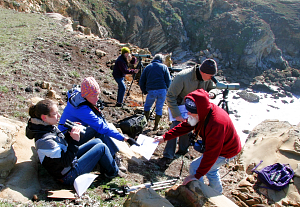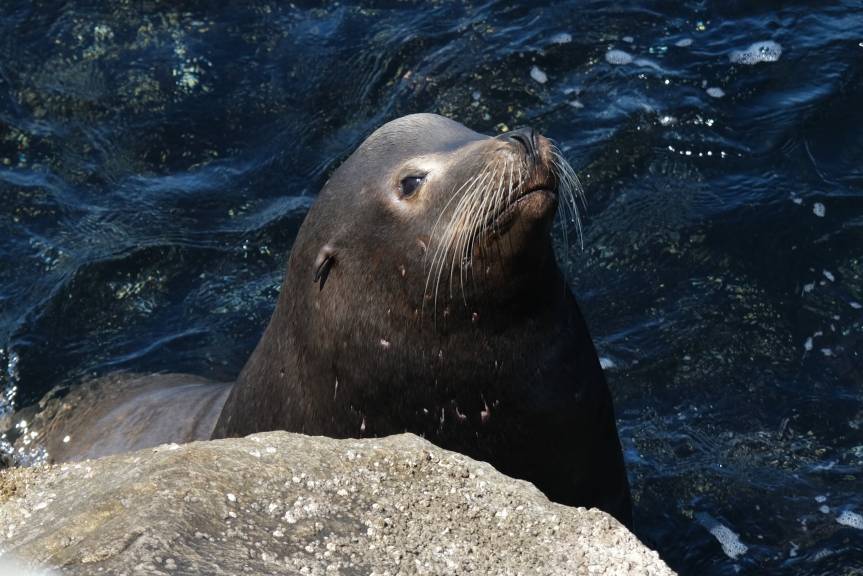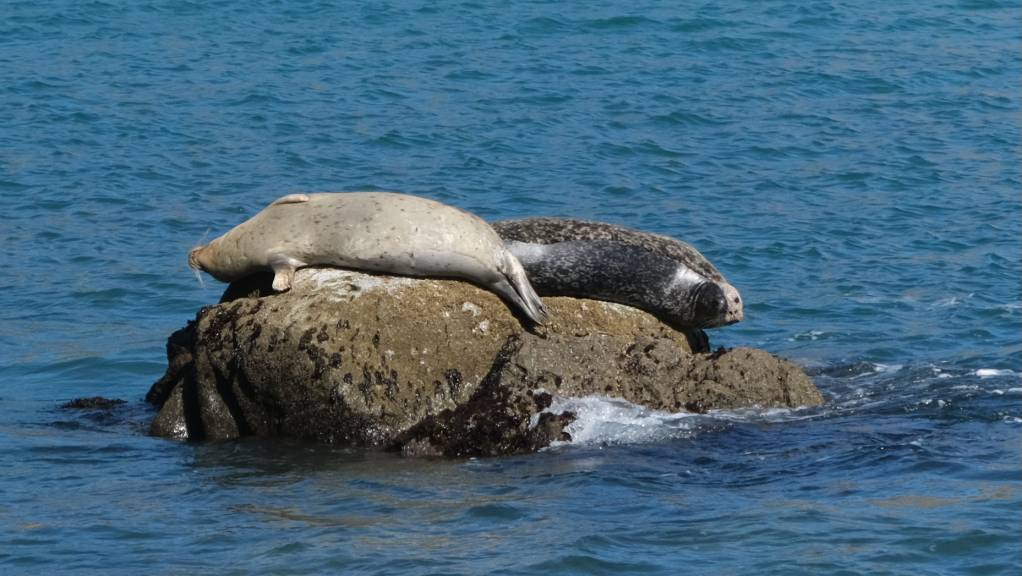Citizen Science Programs

Fort Ross is home to a huge variety of wildlife! We lead and support a number of volunteer-led monitoring programs including Fort Ross' sea lion survey, Point Reyes National Seashore Harbor Seal survey, Beach Watch and iNaturalist Bioblitz events. Starting in 2025 we will be looking for volunteers to assist with plant and butterfly surveys for a new project on restoring Behren's and Myrtle's Silverspot butterfly habitat!
Anyone can be a citizen scientist and the help collecting data is invaluable. Projects like iNaturalist show the immense value of citizen science that provides a resource not just for scientists, engineers, naturalists, and students, but the global community. This data is used to inform research, management, and environmental protection.
FRC also supports initiatives led by other groups, such as sea urchin collection events. If you have any questions about FRC's events or projects or if you are interested in holding a citizen science event at Fort Ross, please email info@fortross.org
Other Citizen Science Projects:
Getting Involved
Interested in getting your feet wet and learning more about your coastline? Taking part in a survey is a great way to increase your understanding of the natural world and helps you to more accurately identify the animals that live on our shores. It’s also great fun! Meet like-minded individuals who share a passion for marine mammals. If you would like to join us for any of these surveys, please email mep@fortross.org
Beach Watch Survey
Currently, Beach Watch surveys, conducted twice a month, cover Fort Ross Cove and north to Kolmer Gulch as well as the area north from Fisk Mill Cove at Salt Point State Park. To read more about the Farallones Marine Sanctuary Association’s Beach Watch program and to sign up for future trainings, please click on the Farallones link.
These species were plentiful during the Russian era but are rarely seen at Fort Ross today:
- Northern Fur Seal (habitat, photos, descriptions, identification tips)
- California Sea Otter (habitat, photos, descriptions, identification tips)

Volunteer Training
FRC offers hands-on training in identifying and counting these fabulous creatures. We offer informational sessions during which we will describe the marine mammal observation program at Fort Ross and give you an opportunity to train and sign up to help us with this exciting field work.
This is your opportunity to engage with science at a local level.
History
The history of Fort Ross is inextricably tied to the Pacific Ocean’s resources. Russians settled Alaska in their hunt for “soft gold,” and later migrated down the Pacific coast with two primary goals: to find a warmer location whereby they could grow enough food to feed those Alaskan settlements, and to increase the range of marine mammals being hunted. It wasn’t only the Russians hunting marine mammals — it’s worth noting that many nationalities, in particular the Russians, British, and Americans, hunted sea otters, northern fur seals, and other mammals that once thrived along our coast, often trading these goods with the Chinese. Russians and others realized that the hunting was putting many species on the brink of extinction, and they created one of the earliest moratoriums on hunting practices.

We thank California State Parks Foundation for helping launch our Marine Mammal Monitoring program.

